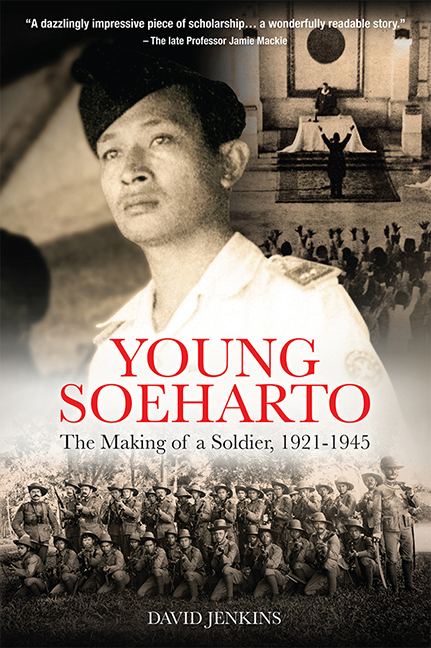Book contents
- Frontmatter
- Contents
- Foreword
- A Note on Spelling and Names
- A Note on Military Organization
- Maps
- List of Charts
- Preface
- Soeharto Family Tree
- 1 “The Sultan came to me and asked about that Family tree”
- 2 “The Cork on which the Netherlands Floats”
- 3 “They Regard Holland as a very Weak Power”
- 4 “An Invisible Motivating Force”
- 5 “What kind of Islam is this?”
- 6 “Soeharto is a Closed Book”
- 7 “I was Suited to the Disciplined life of the Military”
- 8 A Reassuringly Familiar World
- 9 A Policeman for the Japanese
- 10 An Armed Force Conjured out of Nothing
- 11 “The whole Island was Ablaze with Enthusiasm”
- 12 “Don’t make them too Strong!”
- 13 “Soeharto was a Cautious Man”
- 14 “Why did they Choose Soeharto?”
- Glossary and Abbreviations
- Notes
- Acknowledgements
- Bibliography
- Index
- About the Author
14 - “Why did they Choose Soeharto?”
Published online by Cambridge University Press: 09 October 2021
- Frontmatter
- Contents
- Foreword
- A Note on Spelling and Names
- A Note on Military Organization
- Maps
- List of Charts
- Preface
- Soeharto Family Tree
- 1 “The Sultan came to me and asked about that Family tree”
- 2 “The Cork on which the Netherlands Floats”
- 3 “They Regard Holland as a very Weak Power”
- 4 “An Invisible Motivating Force”
- 5 “What kind of Islam is this?”
- 6 “Soeharto is a Closed Book”
- 7 “I was Suited to the Disciplined life of the Military”
- 8 A Reassuringly Familiar World
- 9 A Policeman for the Japanese
- 10 An Armed Force Conjured out of Nothing
- 11 “The whole Island was Ablaze with Enthusiasm”
- 12 “Don’t make them too Strong!”
- 13 “Soeharto was a Cautious Man”
- 14 “Why did they Choose Soeharto?”
- Glossary and Abbreviations
- Notes
- Acknowledgements
- Bibliography
- Index
- About the Author
Summary
In writing about this period Soeharto is at pains to stress his mounting anti-Japanese feeling. All his experience in the Peta, he wrote in his memoir, had convinced him “that in no way could we condone the brutal treatment meted out by some of the Japanese officers. I felt a growing desire to fight back.” In the aftermath of the Blitar incident, he adds, the Japanese decided to purge the Peta officer corps not just in Blitar but in various other places as well. “I had a feeling that I was one of those who would be ousted, but a number of Japanese officers who respected me saved me from expulsion.” Some years later, Soeharto gave this story a further polish. The Kenpeitai, he said, “began watching me closely because they knew I was beginning to feel critical about them.” Even if these fears were well founded, which seems unlikely, it is notable that Kenpeitai “suspicion” is not referred to until 1945.
Soeharto may have felt some concern about his position at that time. But the Japanese confined their wrath to those who had played a key role in the Blitar revolt, and it is difficult to avoid the impression that Soeharto is attempting here to embellish his nationalist credentials. If indeed he felt a growing desire to fight back, he had an odd way of showing it. Everything suggests that he was quite willing to go on cooperating with the Japanese. Nor, it seems, did the Japanese entertain any serious doubts about Soeharto's loyalty at the time of the Blitar uprising. On the contrary, he was the one man, out of 250 Peta company commanders on Java, to whom they turned in their hour of need. Immediately after the revolt, Soeharto was sent to Brebeg to train junior Peta members as squad leaders or NCOs (bundancho), to replace those arrested by the Japanese. Given the state of Japanese paranoia about the loyalty of the volunteer army, there could hardly have been a more sensitive assignment at that time or stronger evidence of the faith that Soeharto's superiors had in him.
Japanese officers who served in Java reject out of hand Soeharto's claim that he fell under suspicion at this time.
- Type
- Chapter
- Information
- Young SoehartoThe Making of a Soldier, 1921–1945, pp. 291 - 306Publisher: ISEAS–Yusof Ishak InstitutePrint publication year: 2021



